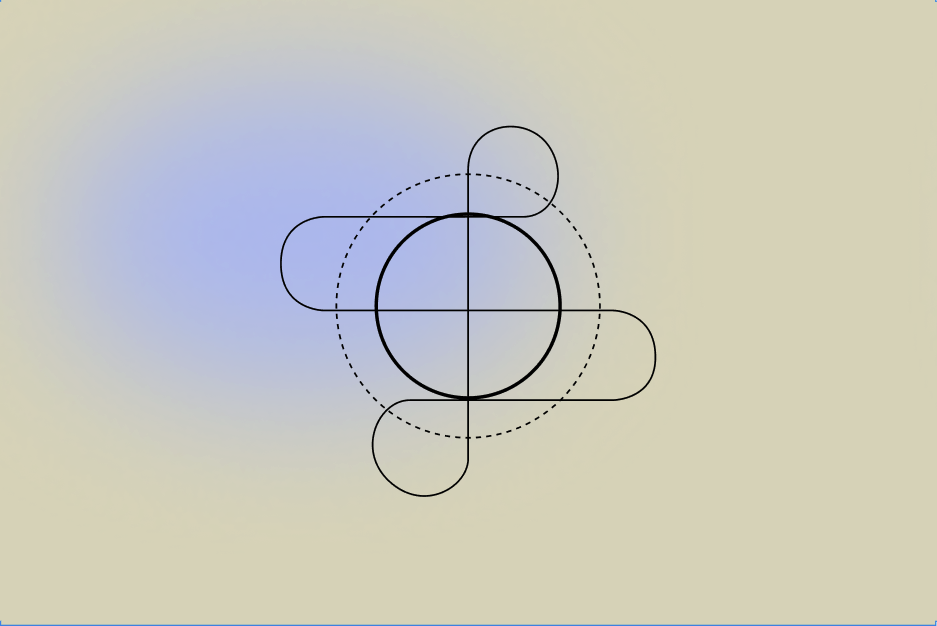The enterprise software landscape is being rebuilt from the ground up. AI-native applications are displacing incumbents across every category, just as cloud displaced on-premise and mobile redefined how we work. But nowhere is this transformation more urgent than in enterprise risk management.
I spent eight years at Palantir working with organizations facing impossible risk challenges: security incidents triggering compliance failures, operational disruptions exposing data protection gaps, regulatory requirements conflicting across jurisdictions. The consistent pattern? Risk domains don't exist in isolation, but organizations manage them that way. Fragmented point solutions, disconnected risk registers, teams that never speak to each other. Built for a different era, failing in this one.
At HelmGuard, we're not iterating on legacy approaches. We're building enterprise trust infrastructure from first principles.
The Three Failures of Traditional Enterprise Risk Management
Working with enterprises across healthcare, financial services, and critical infrastructure, we've identified three systemic failures:
1. The Fragmentation Problem
Risk lives in silos. Security operates independently from compliance. Data protection doesn't coordinate with legal. Operational risk teams don't see vendor dependencies. Each domain has its own tools, frameworks, and language.
When a security incident occurs, compliance doesn't know which frameworks are impacted. When a vendor fails, operations doesn't understand the data protection implications. When regulations change, nobody knows which controls need updating across domains.
Teams spend 70-80% of their time gathering and normalizing data across silos, leaving 20% for actual risk analysis. The moment they finish, the data is already stale. This can’t be solved with better workflows but, rather, requires a fundamental rearchitecting.
2. The Scale Paradox
Manual processes that work at small scope fail catastrophically at enterprise scale. A healthcare system with 5,000 suppliers, each with clinical safety, data protection, and compliance requirements. A financial institution with operations in 40 countries, each with different regulatory frameworks. A PE firm with 30 portfolio companies, each requiring due diligence across multiple risk domains.
As enterprises grow, their risk visibility decreases. The more complex the organization, the less they understand their actual exposure. This is backwards.
3. The Verification Theater
Current approaches rely on self-attestation and periodic audits. Security questionnaires completed annually. Compliance frameworks checked quarterly. Risk assessments performed when convenient. Everyone performs verification theater, checking boxes without genuine evidence.
The illusion of control dissolves at first contact with reality. We saw this repeatedly: organizations with comprehensive risk registers and catastrophic failures because nobody verified the controls actually worked or that risks were truly connected across domains.
Enterprise Trust Infrastructure: A Different Approach
HelmGuard is built on a simple premise: risk assurance requires infrastructure, not tools.
Unified Intelligence Foundation
We consolidate security, compliance, data protection, legal, and operational risk into one intelligent foundation. Not a dashboard aggregating alerts. An intelligence layer that understands relationships between risks, controls, requirements, and business processes across domains.
This enables cross-domain analysis that siloed tools cannot provide. When a data breach occurs, we immediately understand which compliance frameworks are impacted, which operational processes are exposed, which legal obligations are triggered, and which stakeholders need assurance. When regulations change, we map impacts across security controls, vendor requirements, data handling procedures, and operational workflows. That's not data aggregation. That's intelligence.
Zero Knowledge Verification: Trust Without Disclosure
For the most sensitive data, we are also introducing Zero Knowledge Verification, to enable rigorous verification of controls and requirements across risk domains without exposing sensitive data.
This solves a fundamental tension in enterprise risk: thorough verification versus information protection. Organizations can now verify security controls without exposing system architectures. Establish compliance posture without sharing customer data. Conduct operational risk assessments without revealing proprietary processes. Enable board-level assurance without disclosing sensitive business intelligence.
This unlocks entirely new capabilities. Customer assurance becomes instant instead of taking weeks. M&A due diligence accelerates from months to days. Cross-border operations can verify compliance without exposing data across jurisdictions. Partnership enablement no longer stalls on information sharing negotiations.
AI Agents That Execute, Not Just Report
Our AI agents don't follow scripts. They investigate, correlate, and act across risk domains.
Autonomous risk discovery identifies control gaps before they become incidents. Intelligent prioritization accounts for business context and cross-domain impacts, not just isolated severity scores. Automated remediation workflows coordinate changes across security, compliance, data protection, and operations instead of generating disconnected reports.
These agents work continuously. When a security control fails, they assess compliance framework impacts, operational dependencies, and customer assurance requirements. When regulations change, they map requirements across domains and identify affected controls, processes, and systems. When conducting M&A due diligence, they execute comprehensive assessments across security, compliance, data protection, and operational risk in parallel.
They scale your team's capabilities without scaling headcount. More importantly, they enable the kind of comprehensive, continuous, cross-domain risk assessment that was simply impossible with manual approaches.
Built for Complex Enterprises
HelmGuard is built for organizations where risk intersects across domains. Where security incidents trigger compliance obligations. Where data protection requirements constrain operational processes. Where regulatory changes cascade across multiple control frameworks. Where customer assurance depends on verifiable evidence across security, compliance, and operations.
When traditional GRC platforms cannot handle cross-domain complexity, when risk questions require connecting insights across silos, when assurance must be verifiable and continuous rather than self-attested and periodic, that's when you need risk assurance infrastructure.
We're working with enterprises that understand risk management must fundamentally evolve. These organizations aren't seeking incremental improvements to isolated risk domains. They're seeking transformational capabilities that connect risk intelligence across security, compliance, data protection, legal, and operations to turn risk from a blocker into an enabler.
If your organization manages complex risk interdependencies, operates across multiple regulatory frameworks and jurisdictions, requires continuous assurance across domains rather than periodic audits, or needs to make risk-informed decisions at the speed of business, we should talk.
About the Author
John Daley is CEO and Co-Founder of HelmGuard. He spent eight years at Palantir before founding HelmGuard to reimagine how enterprises understand and manage risk across domains.
.svg)
.webp)

.png)
